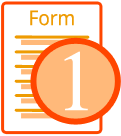February 28, 2011 (Shirley Allen)

Investors and cash buyers drove existing home sales higher in January. Investors bought a whopping 23 percent of all existing homes, while a third of all sales were purchased for cash. January’s annual rate of 5.36 million home sales also represented a 5.3 percent annual gain over January 2010 figures, the first time in seven months that sales figures have exceeded those from one year earlier.
Information released in the National Association of Realtor’s (NAR) January Existing Homes Sales report showed single-family home sales rose 2.4 percent to a seasonally adjusted annual rate of 4.69 million in January from 4.58 million in December, and are 4.9 percent higher than the 4.47 million level in January 2010. Existing condominium and co-op sales increased 4.7 percent to a seasonally adjusted annual rate of 670,000 in January from 640,000 in December, and are 7.9 percent above the 621,000-unit pace one year ago.
“The uptrend in home sales is consistent with improvements in the economy and jobs, which are helping boost consumer confidence,” said Lawrence Yun, NAR chief economist. “The extremely favorable housing affordability conditions are a big factor, but buyers have been constrained by unnecessarily tight credit. As a result, there are abnormally high levels of all-cash purchases, along with rising investor activity.”
January investor sales were up from 20 percent in December and from 17 percent one year earlier. All-cash sales represented 32 percent of all sales, compared to 29 percent in December and 26 percent in January 2010. It’s the highest percentage of all-cash sales reported since the NAR began tracking the figure in October 2008, when they made up only 15 percent of all sales. The average for all of 2009 was 20 percent.
“Increases in all-cash transactions, the investor market share and distressed home sales all go hand-in-hand,” Yun said. “With tight credit standards, it’s not surprising to see so much activity where cash is king and investors are taking advantage of conditions to purchase undervalued homes.”
Regionally, existing-home sales in the Northeast fell 4.6 percent to an annual pace of 830,000 in January from a spike in December and are 1.2 percent below January 2010. Existing-home sales in the Midwest rose 1.8 percent in January to a level of 1.14 million and are 3.6 percent above a year ago. In the South, existing-home sales increased 3.6 percent to an annual pace of 2.02 million in January and are 8.0 percent higher than January 2010. Existing-home sales in the West rose 7.9 percent to an annual level of 1.37 million in January and are 7.0 percent above January 2010.
The national median existing-home price for all housing types was $158,800 in January, down 3.7 percent from January 2010. The median existing single-family home price was $159,400 in January, down 2.7 percent from a year ago. The median existing condo price was $154,900 in January, which is 10.2 percent below January 2010.
The median price in the Northeast was $236,500, which is 4.0 percent below a year ago. The median price in the Midwest was $126,300, which is 3.2 percent below January 2010. The median price in the South was $136,600, down 2.1 percent from a year ago. The median price in the West was $193,200, down 5.7 percent from a year ago.
Tags: NAR, existing home sales, investors, cash buyers, single family homes, condominiums, median home price


